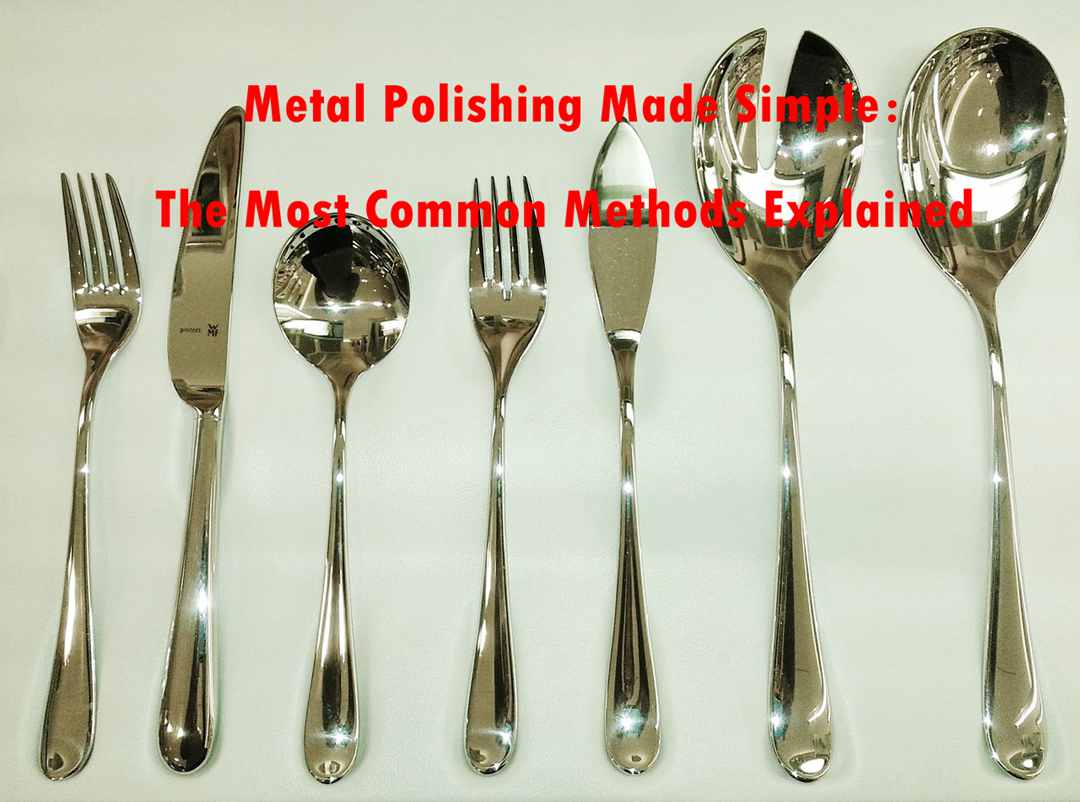Our Location
304 North Cardinal St.
Dorchester Center, MA 02124

Polishing is a vital finishing process for creating smooth, lustrous surfaces on materials like metal, plastic, glass, and more. There are various mechanical, chemical, and electrochemical polishing methods used across different industries and applications. Here is an introduction to some of the most common polishing methods and tools:
Mechanical polishing uses physical abrasion to gradually smooth and flatten surfaces. Common techniques include:
In abrasive tumbling, parts are placed in a rotating barrel along with an abrasive media like ceramic pellets, plastic pellets, or metal shot. As the barrel rotates, the media abrades the surface through low-stress grinding and burnishing actions. Finer abrasive grits are used in stages to achieve smoother finishes.
Grinding uses bonded abrasives like grinding wheels, belts, or discs to remove material. The cutting action results from the fracture and dulling of abrasive grains to expose fresh sharp grains. Lapping employs free abrasive particles in a fluid carrier. The abrasive slurry flows between the lapping plate and workpiece.
Buffing uses muslin cloth wheels charged with polishing compounds. As the wheel spins, it burnishes and smears the surface to make it bright and smooth. Polishing wheels use softer materials like cotton and flannel for final color and gloss polishing.
Vibratory finishing uses abrasive media mixed with a liquid which is vibrated against surfaces to abrade and deburr them. Machine parameters can be adjusted to control the intensity of the finishing process.
Chemical polishing uses chemical reactions to evenly remove material:
Electropolishing makes the workpiece anodic in a temperature-controlled electrolytic bath. As current is applied, surface high points and irregularities experience higher current density and faster dissolution compared to valleys. This results in a leveling action that smoothes the surface.
In chemical bath polishing, the workpiece is immersed in a bath containing an acid solution which reacts with the surface material. By controlling bath parameters like temperature, acid concentrations, and immersion times, the acid can be made to dissolve surface material evenly without preferential attack.
Passivation refers to the use of acids like nitric acid or citric acid to remove free iron and other surface contamination on stainless steel and other alloys. This leaves a clean passive layer to enhance corrosion resistance.
Pickling entails the use of acids like sulfuric acid or hydrochloric acid to remove oxides and scale from metal surfaces prior to further finishing. It helps expose a fresh, clean underlying surface.
Titanium alloy screws require polishing to achieve smooth, bright surfaces and dimensional accuracy. Here are some common methods and the principles behind polishing titanium alloy screws:
Proper titanium alloy screw polishing achieves required surface quality and dimensional tolerances for precision applications. The method selected depends on factors like batch sizes, surface requirements, cost, and throughput needs.
Give us a call today to speak with a member of our CNC machining team, or use our online request-a-quote tool to see how our experienced specialists can meet your machining needs.